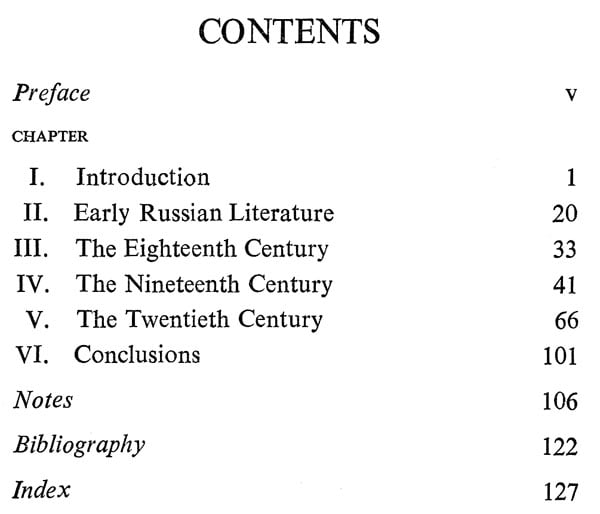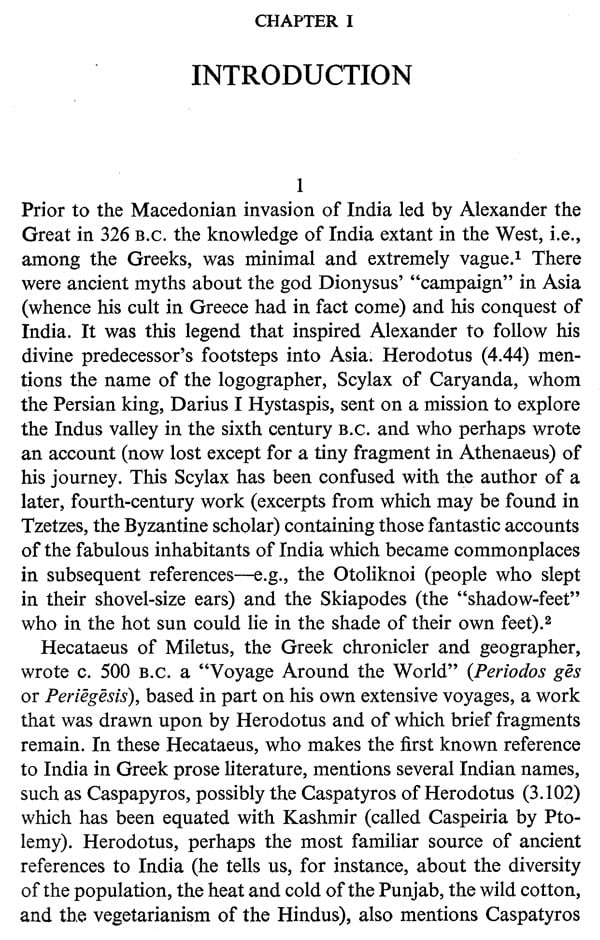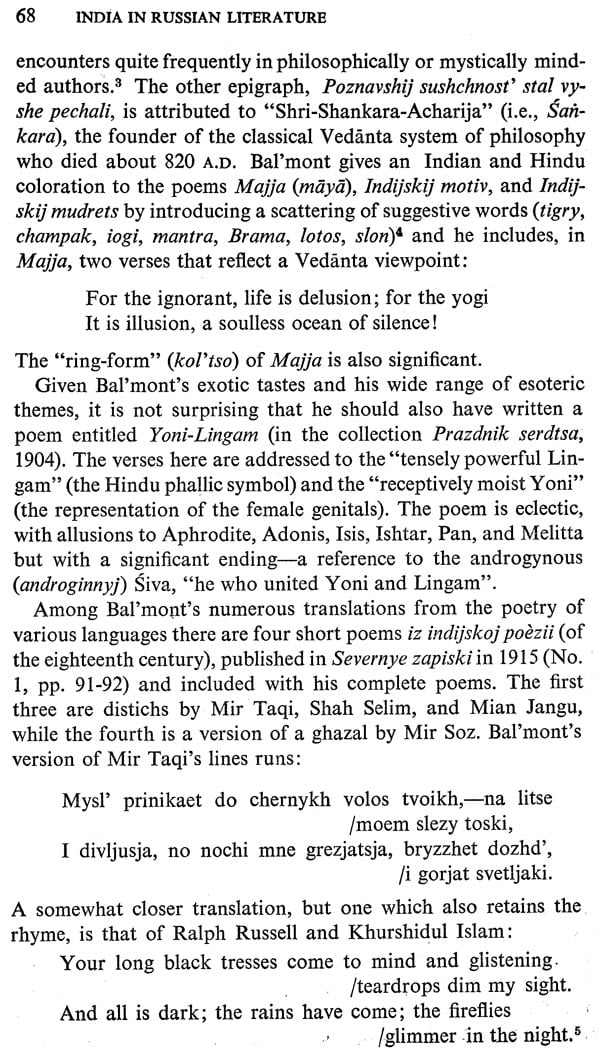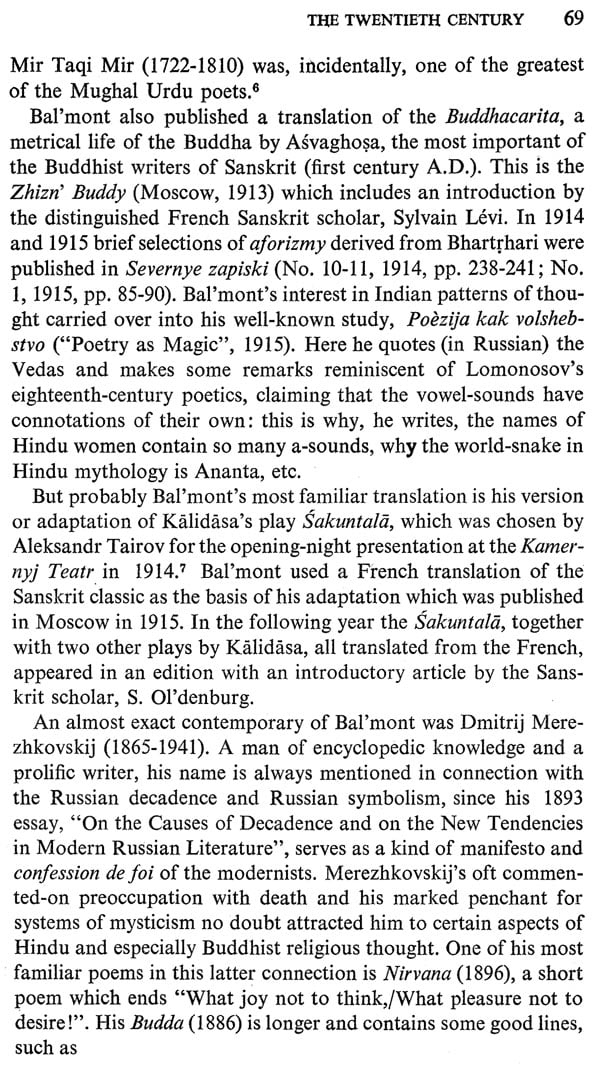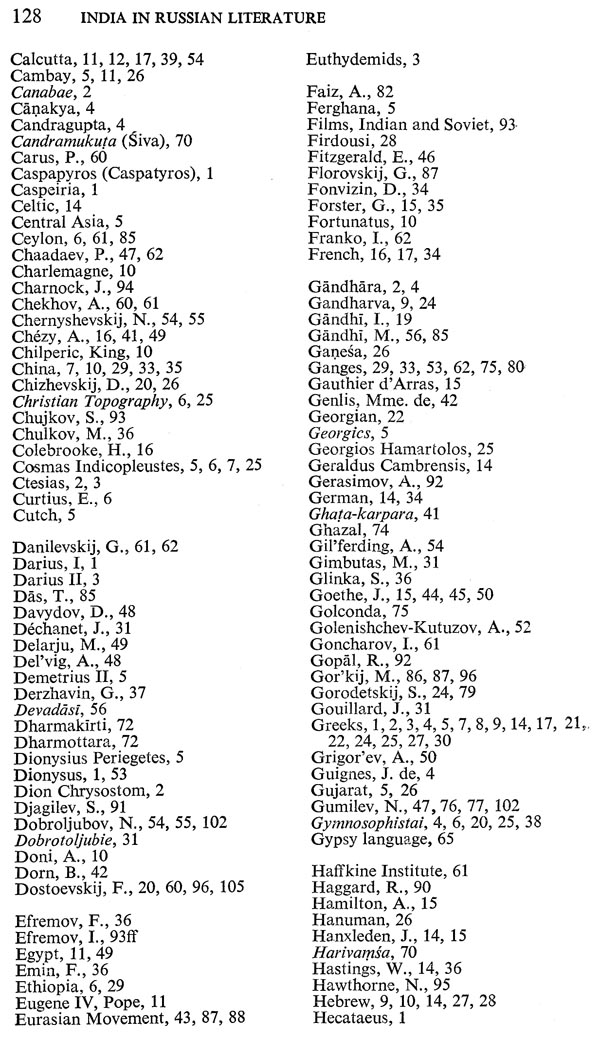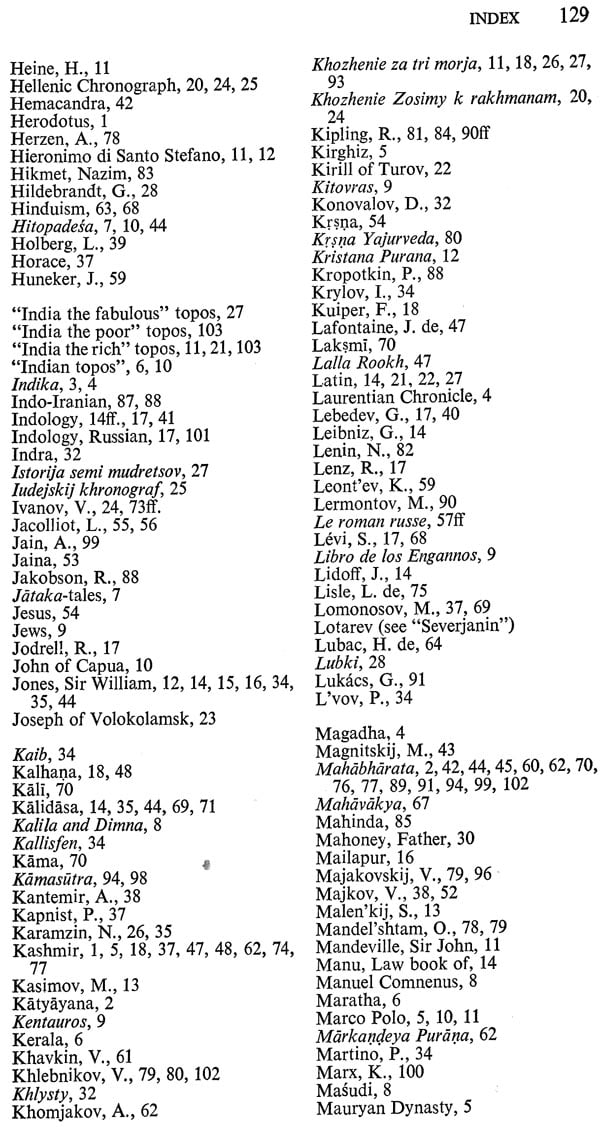
India In Russian Literature (An Old and Rare Book)
Book Specification
| Item Code: | NZW371 |
| Author: | R.H. Stacy |
| Publisher: | Motilal Banarsidass Publishers Pvt. Ltd |
| Language: | ENGLISH |
| ISBN: | 0895817594 |
| Pages: | 132 |
| Cover: | HARDCOVER |
| Other Details | 9.00 X 5.50 inch |
| Weight | 320 gm |
Book Description
With an immense colonial territory stretch-ing out across Asia, it was natural that both prerevolutionary Russia and Soviet Russia should early have showed a parti-cular interest, not always limited to cultural matters, in India. Like their West European colleagues, Russian writers, too, from early times have been attracted to and influenced by the rich traditions of Indian art, litera-ture, and religious thought. This book attempts simply to present and comment on a number of major and minor examples of such interests on the part of Russian poets and prose authors from the medieval period to the present. A bibliography and index are provided.
The author, Robert H. Stacy, is Professor of Russian Literature at Syracuse University (in the state of New York, U.S.A.). He also teaches Chinese literature in English translation and has a particular interest in the languages and literatures of Asia. Professor Stacy is the author of Russian Literary Criticism: A Short History and Defamiliarization in Language and Litera-ture, both published by the Syracuse University Press.
Such facts, for instance, that references to India, accounts of travels in India, and narratives of ultimately Indian origin appear quite early in Russian literature and that motifs drawn from Hindu mythology and allusions to India occur quite frequently in Russian poetry, suggest that further study of such matters may be of some interest to both literary scholars and amateurs of Russian literature. A number of similar studies are already available dealing with the Indian background in several major literatures—e.g., Robert Sencourt's India in English Literature (1923); A. L. Willson's The Mythical Image: The Ideal of India in German Romanticism (1964); and B. Bissoondoyal's India in French Literature (1967). (I might also mention here Shasta Bryant's article, "The Spanish Image of India", and Keith Hitchins' "Reflections of India in Rumanian Popular Litera-ture".*) England, with its long history of commercial connections with the Orient and, especially, with its close and rather lengthy affiliations with India within the Empire, afforded Sencourt many and varied examples of Indian influence on English literature. There was a similar relationship between France and India (Pondicherry), though on a smaller scale. In the case of Germany, with no colonial establishment on the subcontinent, the many references to and images of India in its romantic literature are largely a commentary on Friedrich Schlegel's remark that im Orient miissen wir das hiichste Romantische suchen.
So far as Russia is concerned, her literature reflects both those periods of actual contact and intercourse with various oriental cultures so familiar to students of Russian history as well as that markedly romantic interest in Asia that is so noticeable a feature of German literature. Though we can recall many famous names out of the Anglo-Indian past (Robert Clive, William Jones), and though the achievements of German and French orientology are significant, it is only Russia that can make the claim, for example, that it was in fact a Russian (G. S. Lebedev) who is considered the founder of modern Bengali drama.
Furthermore, there are a number of interesting facts and associations, that might easily induce one to look more closely into certain relationships between various aspects of the Indic and Slavic—more specifically Russian—cultures. These cover a wide range, from such elementary things as the fact that both the Russian language and Sanskrit belong to the so-called satem group of Indo-European languages—more particularly, that certain Russian words (especially in their spoken oblique forms) reveal close Sanskrit affinities (e.g., the plural of the Russian word for "fire", ogon, ogni—pronounced agni—and the name of the Hindu god Agni) and that, as Indo-Europeanists point out, both Russian and Sanskrit share, within the IE family, certain specific and striking similarities, to such matters as the effective use the poet Nikolaj Gumilev, for example, makes of a Hindu motif when he writes:
I have lost thee as once
The frenzied Nala his Damayanti lost.
We might also mention here Afanasij Nikitin's account of his travels in India in the fifteenth century, Count Sergej Uvarov's remarkable enthusiasm for Indian studies, Aleksandr Ostrovskij's translation of Jacolliot's French version of the Tamil play Devadasi, the correspondence between Tolstoj and Gandhi, the extensive passages in the Vicomte de Vogue's Le roman russe comparing the Russian and Indian characters, and Bal'mont's translation and adaptation of Kalidasa's play, Sakuntala.
**Contents and Sample Pages**
